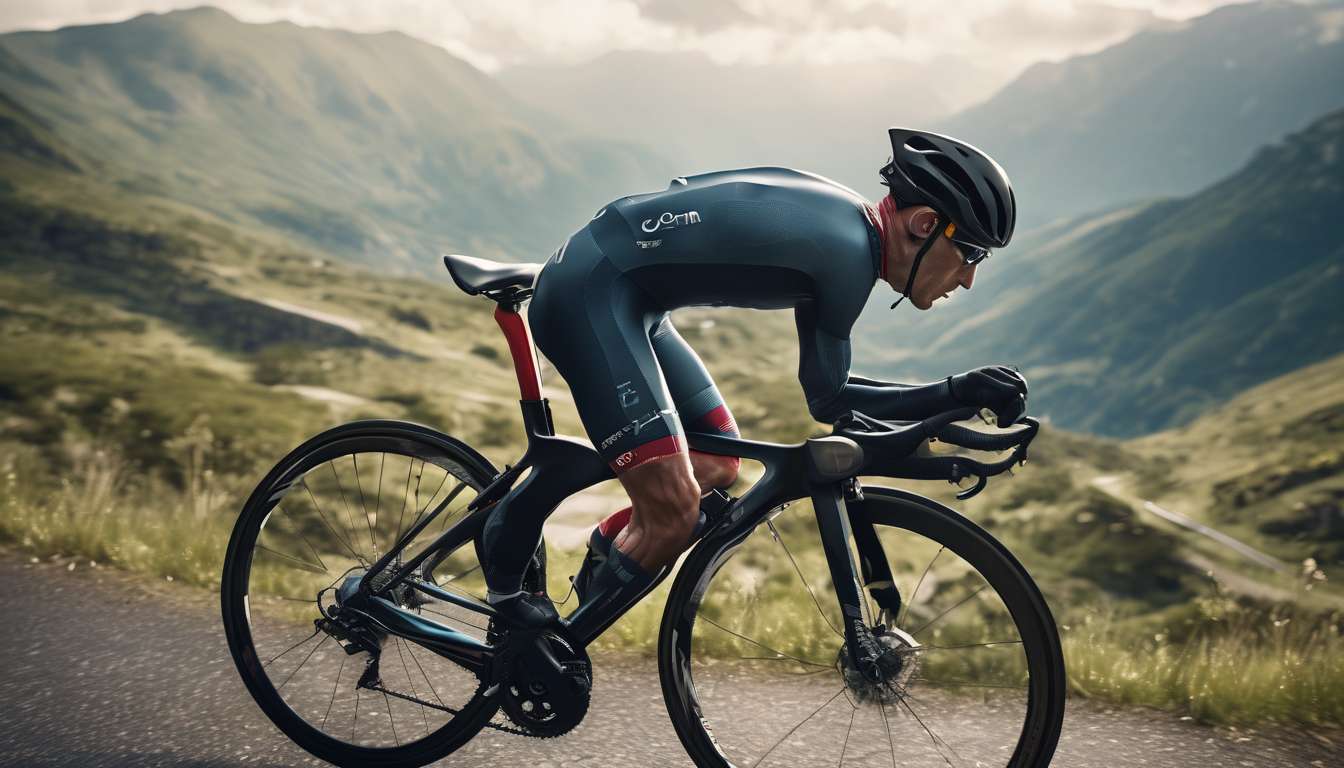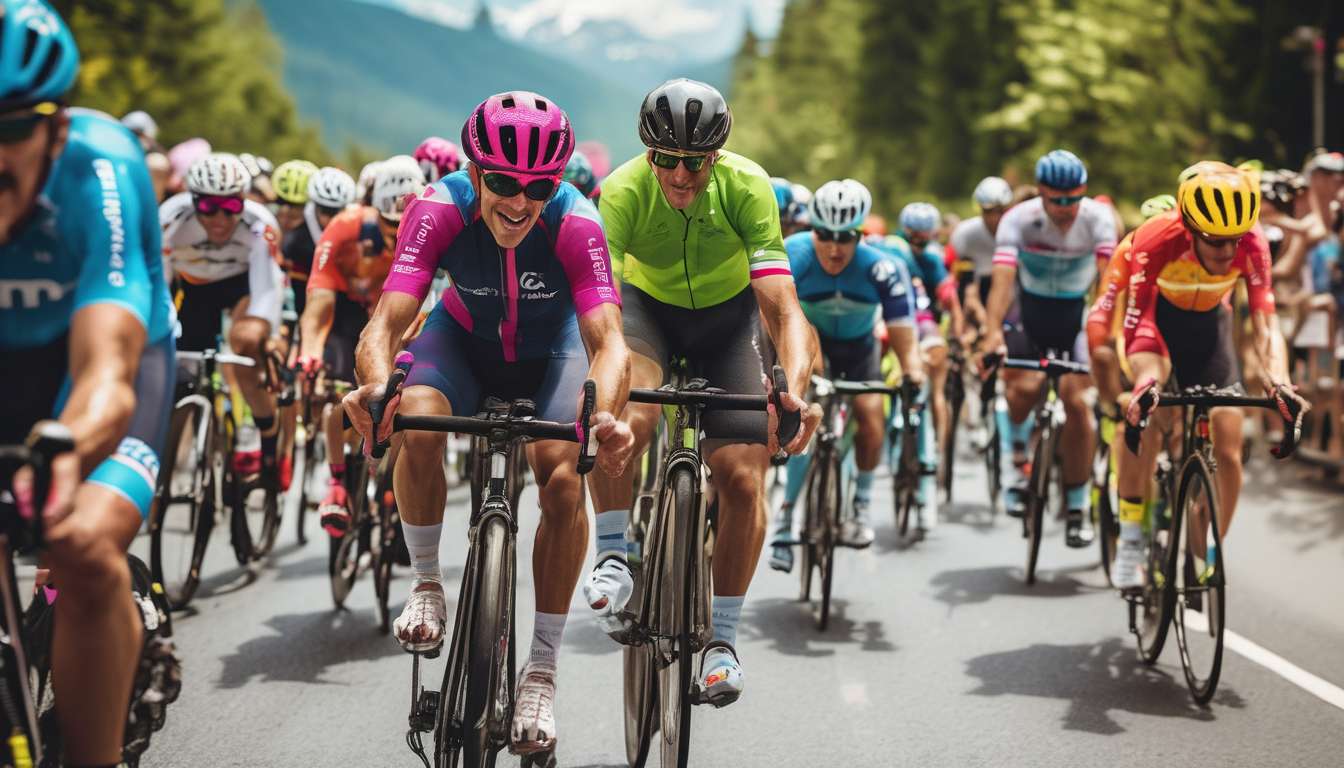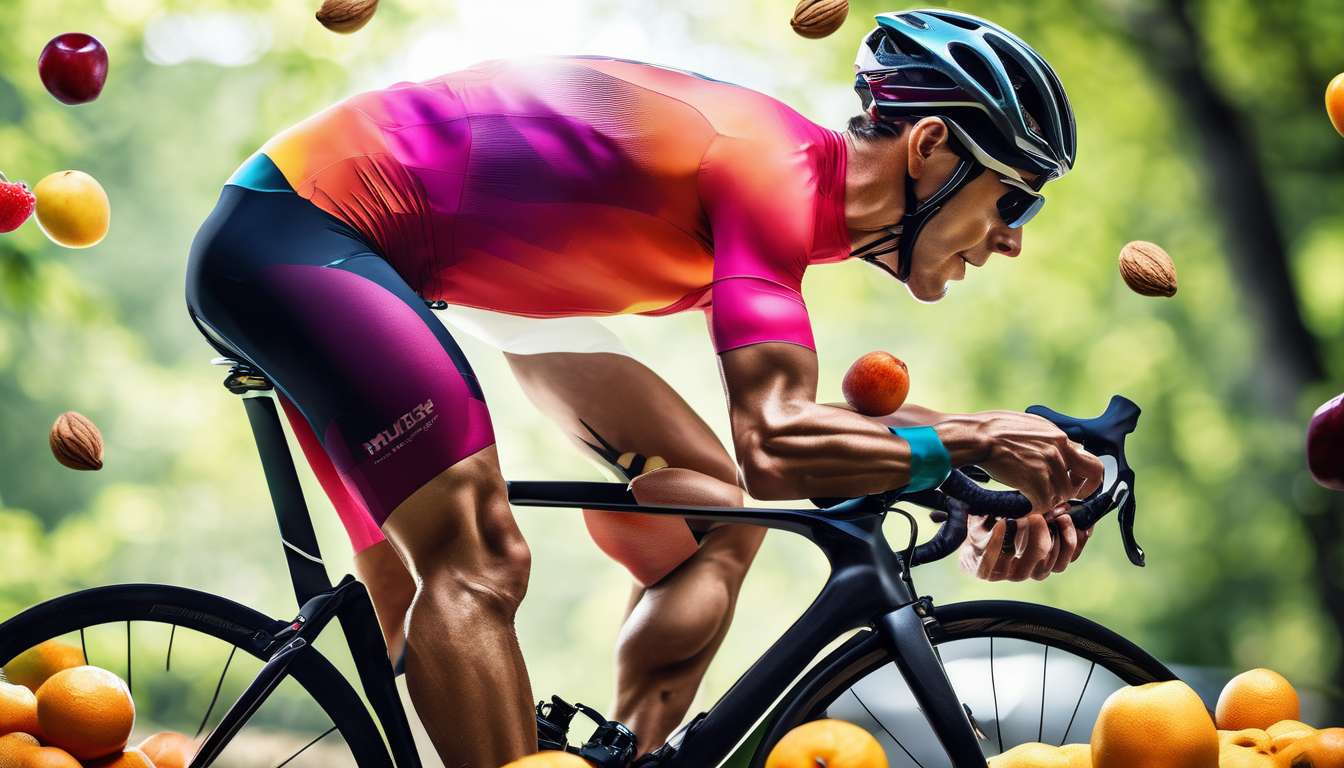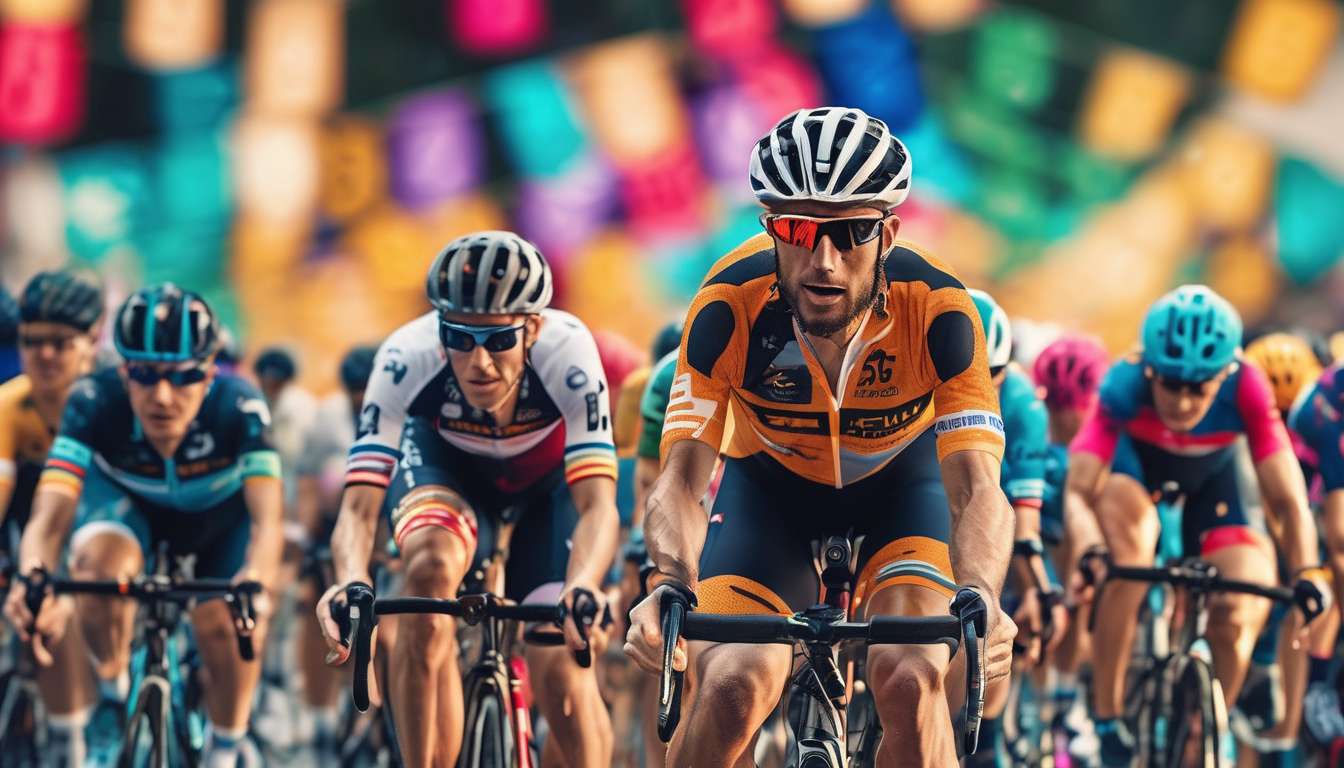As avid followers and participants in the world of professional cycling, we often find ourselves marveling at the intricate dance of strategy, strength, and endurance that defines this exhilarating sport. With every race, we are reminded that the outcomes are not merely the result of individual talent, but rather a complex interplay of various factors that can tip the scales in favor of one rider or team over another.
In our exploration of the sport, we’ve identified five key factors that consistently influence the outcomes in professional cycling:
-
Physical Conditioning:
- Endurance
- Strength
- Recovery capabilities
-
Team Dynamics:
- Coordination
- Communication
- Role specialization
-
Environmental Conditions:
- Weather
- Terrain
- Altitude
-
Technological Advancements:
- Equipment innovation
- Aerodynamics
- Nutritional strategies
-
Race Strategy:
- Pacing
- Positioning
- Tactical decision-making
Each of these elements plays a pivotal role in shaping the narrative of every race.
By delving into these aspects, we aim to uncover the underlying mechanics that drive success on the road, offering insights that deepen our appreciation for the sport and enrich our understanding of what it takes to triumph in the competitive world of cycling.
Physical Conditioning Factors
In professional cycling, optimal physical conditioning is crucial for enhancing performance and endurance. We’re all in this together, striving to push our limits and achieve our best.
Building endurance is a key focus, allowing us to maintain high-intensity efforts over long distances. It’s not just about lasting longer; it’s about feeling strong throughout the race. To achieve this, we craft our training sessions strategically, ensuring we address different energy systems and build both aerobic and anaerobic capacity.
Our strategy doesn’t stop at the gym or on the road.
We pay close attention to our equipment, knowing it can make a significant difference. Key elements include:
- Lightweight bikes
- Aerodynamic helmets
- Specialized gear
These components help reduce drag and increase speed. We constantly tweak and adjust our setups to find that perfect balance between comfort and performance.
It’s a cycle of continuous improvement, both physically and mentally, as we prepare for the challenges ahead, bonded by our shared passion and commitment to excel.
Team Dynamics Elements
Strong team dynamics are essential in professional cycling, as they enable us to collaborate effectively and maximize our collective strengths during races.
When we work as a cohesive unit, we can strategically distribute our endurance across the team, allowing each member to play to their unique skills. By sharing the load, we ensure that no one cyclist is overly taxed, maintaining our energy levels for those crucial moments when a burst of speed or a steep climb demands our best.
Our strategy is pivotal in determining outcomes. Together, we decide:
- When to push the pace
- When to conserve
- When to make that decisive move
Communication is key, as it lets us adapt our plans on the fly, responding to the ever-changing dynamics of a race.
Moreover, our equipment plays a significant role in our success. By sharing insights and preferences, we ensure everyone is equipped with the best gear suited to our individual roles, enhancing performance and unity.
Environmental Influences
Weather Conditions and Terrain in Professional Cycling
Weather conditions and terrain significantly impact our performance in professional cycling, requiring us to adapt our strategies accordingly.
Adapting to Terrain:
- When faced with steep climbs or rapid descents, our endurance is tested, pushing us to our limits.
- We rely on camaraderie and shared knowledge to choose the best approach, ensuring everyone on the team can ride with confidence and resilience.
Adjusting to Weather Conditions:
- In unpredictable weather, our strategy must be flexible.
- We might need to alter our pace in the rain or adjust to strong winds, which can affect our drafting techniques.
- As a cohesive unit, we draw strength from each other and thrive by supporting one another through these challenges.
Role of Equipment:
Our equipment plays a crucial role too.
- Tires suited for wet roads or gear adjustments for varying terrains become essential.
- By ensuring our bikes are tailored to the environment, we maximize efficiency and safety.
Together, we embrace these environmental influences as opportunities to grow stronger and more united.
Technological Advances Impact
Recent technological advances in professional cycling have revolutionized our approach, enhancing performance and safety like never before. We’re part of a community that eagerly embraces these innovations, recognizing their power to transform every aspect of our sport.
Cutting-edge equipment, from aerodynamic frames to smart fabrics, reduces drag and maximizes efficiency, allowing us to push our endurance limits further than we ever thought possible.
Our strategy on the road has evolved, thanks to real-time data analytics. We can now make split-second decisions based on precise performance metrics, giving us an edge when it matters most. The integration of technology into our training and races means we’re not just competing against others but continuously improving our personal bests.
Safety has also seen remarkable advancements.
- Smart helmets
- Integrated communication systems
These technologies help us navigate challenging terrains with confidence.
Together, we’ve stepped into a new era of cycling where technology isn’t just an accessory but a fundamental part of our shared journey.
Strategic Race Components
In professional cycling, mastering strategic race components is crucial for gaining a competitive edge and achieving victory. To succeed, cyclists must embrace three essential elements: endurance, strategy, and equipment.
Endurance isn’t just about lasting the distance; it’s about pacing smartly and conserving energy for decisive moments. It’s the backbone of a cyclist’s ability to stay with the peloton and push through grueling stages.
Strategy plays a pivotal role in race approach:
- Knowing when to break away.
- Positioning within the pack.
Tactics can make or break performance, requiring cyclists to:
- Analyze opponents.
- Tailor moves to exploit weaknesses.
- Reinforce personal strengths.
Finally, equipment is more than just a bike; it’s an extension of a cyclist’s capabilities. The right gear can:
- Enhance performance.
- Reduce fatigue.
- Prepare the cyclist for any terrain.
Together, these components create the foundation for success on the road.
Performance Metrics Analysis
To truly understand a cyclist’s performance, we must meticulously analyze key metrics like power output, cadence, and heart rate. These elements allow us to delve into a cyclist’s endurance levels and strategize effectively for a competitive edge.
Power Output:
- Measures the force a cyclist generates.
- Harmonized with cadence to gauge efficiency and potential fatigue levels.
Cadence:
- Helps understand the cyclist’s pedaling rhythm and efficiency.
Heart Rate:
- Offers insights into how hard the body is working.
- Ensures strategies can be tailored to balance effort and recovery.
In our community, understanding these metrics fosters a shared connection, as we all strive for improvement and success. By integrating advanced equipment, we can refine these measurements further, enhancing the accuracy of our assessments.
Essential Equipment:
- Power meters
- Heart rate monitors
These tools become essential, not just as measurement devices, but as companions on our journey. Together, through shared knowledge and technology, we optimize our performance, ensuring we’re always pushing limits and achieving new milestones.
Psychological Factors Assessment
Understanding the psychological aspects of cycling can significantly enhance our performance and resilience.
As a united community of cyclists, embracing mental strength is as crucial as physical training. Endurance isn’t just about muscle power; it’s about maintaining focus and determination, even when the road gets tough. We’ve all felt the burn in our legs, but pushing through that mental barrier is where true endurance lies.
Strategy plays a pivotal role in our success.
It’s about making quick decisions, such as:
- Whether to break away from the pack
- Conserve energy for that final sprint
Our minds must stay sharp, adapting to the race’s dynamic nature.
Let’s not underestimate how equipment influences our psychological state.
A well-maintained bike boosts confidence, making us feel part of something bigger. When our gear is in sync with our mindset, we feel unstoppable.
Together, understanding these psychological factors can transform our approach, fostering a deeper connection within our cycling community.
Pre-race Preparation Evaluation
Thorough pre-race preparation is essential for maximizing our performance and ensuring we’re ready for any challenge that might arise.
As a united team, we focus on building our endurance through targeted training sessions that push our limits and enhance our stamina. We know that collective strength is vital, and we encourage one another to reach new heights.
Our strategy sessions are where we come together to:
- Devise plans that capitalize on each member’s strengths.
- Address potential weaknesses.
- Discuss race tactics, from pacing to breakaways.
This ensures we’re all aligned and prepared for every scenario on race day.
Equipping ourselves with the right gear is another crucial aspect of our preparation. We meticulously:
- Check and fine-tune our bicycles to ensure everything is in perfect working order.
- Choose equipment, from helmets to cycling shoes, that is tailored to provide maximum comfort and efficiency.
By prioritizing these elements, we create a sense of camaraderie and shared purpose, empowering us to tackle any race with confidence and determination.
How do recovery strategies between races impact overall performance in a cycling season?
Recovery Strategies Between Races
Recovery strategies are crucial for maintaining overall performance during the cycling season. By prioritizing recovery, cyclists can consistently perform at their best throughout the season. Here are some key components:
- Proper Rest: Ensures that the body has adequate time to repair and rejuvenate.
- Nutrition: Fuels the body with essential nutrients needed for energy and muscle recovery.
- Active Recovery: Involves low-intensity activities that promote blood flow and muscle repair without causing additional fatigue.
By focusing on these recovery strategies, cyclists can maintain peak condition and avoid burnout. This preparation ensures that they are ready to tackle each race with maximum energy and strength.
What role does nutrition play in the long-term career sustainability of professional cyclists?
Nutrition is vital for sustaining a long-term career in professional cycling. It fuels our bodies, aids in recovery, and optimizes performance. Without proper nutrition, we risk compromising our health and potential.
Focus on Quality Foods:
- Enhance endurance
- Build strength
- Improve overall well-being
By focusing on quality foods that provide the necessary nutrients, we can significantly enhance our physical abilities.
Smart Dietary Choices:
Making smart dietary choices is a key factor in ensuring our success and longevity in the sport.
How do sponsorship and financial backing influence a team’s ability to compete at the highest level?
Sponsorship and financial backing are vital for a team’s success in professional cycling. They provide the resources needed for:
- Top-notch equipment
- Training facilities
- Support staff
Without them, it’s challenging to compete at the highest level and secure top talent.
Our team understands the importance of strong partnerships in achieving our goals. With the right backing, we can focus on training and racing, knowing that we have the support we need to succeed.
Conclusion
In conclusion, professional cycling outcomes are influenced by a combination of key factors:
- Physical Conditioning
- Team Dynamics
- Environment
- Technology
- Race Strategy
- Performance Metrics
- Psychology
- Pre-race Preparation
Understanding and optimizing these factors can greatly impact an athlete’s success in the sport.
By focusing on these elements and continuously improving in each area, cyclists can enhance their overall performance and achieve their goals in competitive cycling events.




